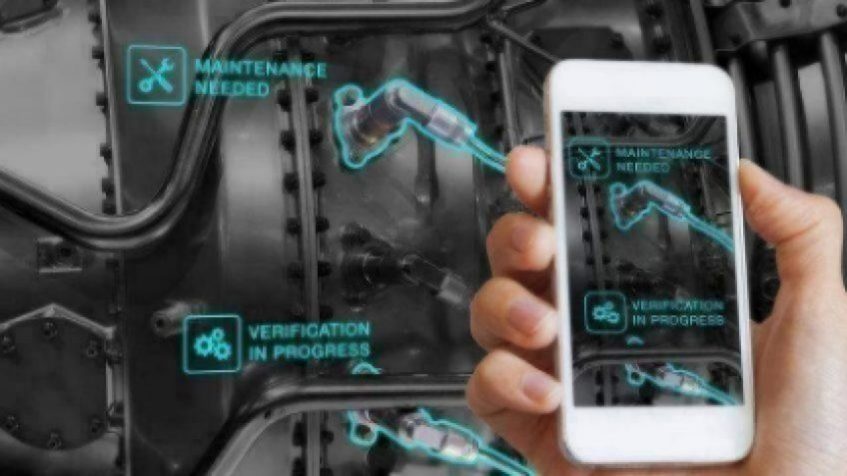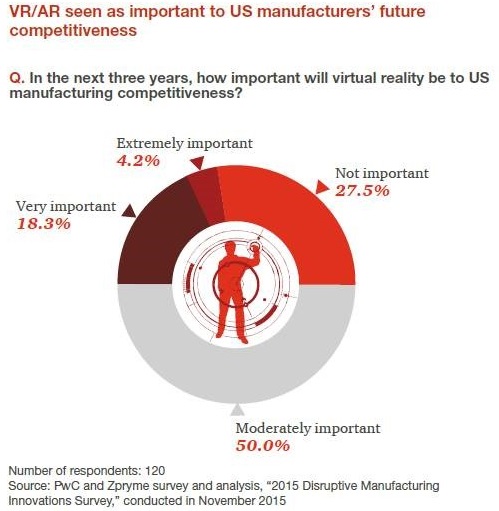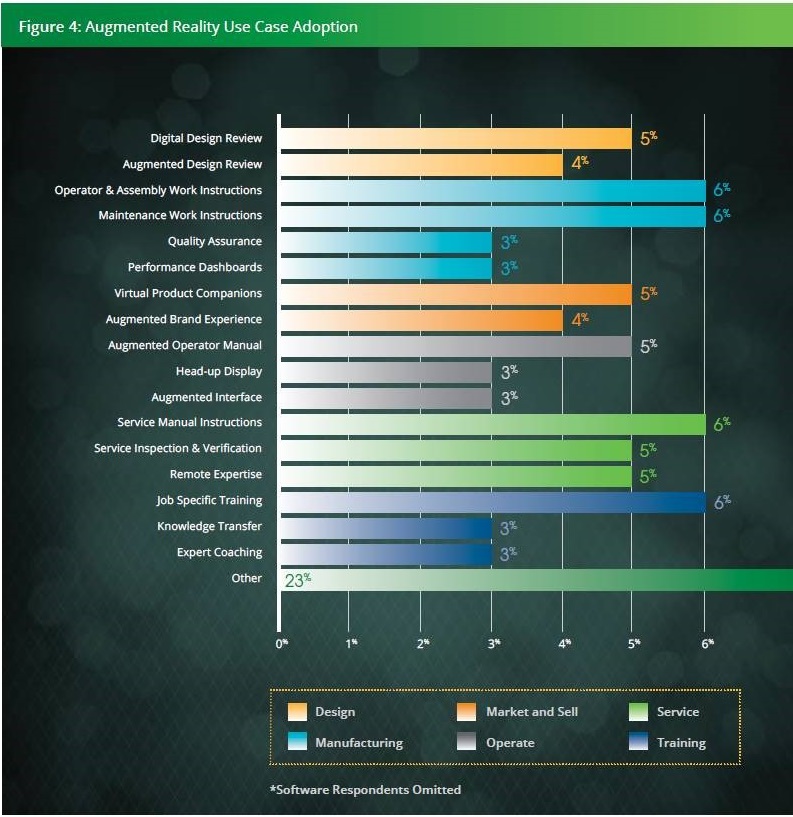Visualizing AR/VR in Manufacturing
Article By : Barbara Jorgensen

As augmented and virtual reality (AR/VR) technologies come of age, manufacturers are finding ways to adopt these technologies on a variety of fronts.
As augmented and virtual reality (AR/VR) technologies come of age, manufacturers are finding ways to adopt these technologies on a variety of fronts, including product development, training, maintenance, repair and worker safety. Flex, a $25 billion electronics design and manufacturing services (EMS) provider, envisions expanding that universe even further.
AR/VR is so important to the manufacturing industry that Flex has adopted it as one of six key pillars of its Industry 4.0 strategy. The company’s focus includes enhancing its global manufacturing processes and delivering customer solutions through M2M communication; smart automation and robotics; augmented/virtual reality; 3D manufacturing; simulation and visualization and business intelligence.
“[AR/VR] is something that will not only impact Flex, but the industry in general,” said Zohair Mehkri, XR and Simulation Engineering Manager at Flex. “It has a place in design, usability and product lifecycle management. The use case depends on where the product is in its lifecycle. AR and VR are usually lumped together, but they are inherently different in the development of the products.”

EMS companies have a unique position in the electronics supply chain — Flex’s 100 facilities worldwide are outsourced to original equipment and original design manufacturers (OEMs/ODMs). Manufacturing services alone yield only razor-thin profit margins, so EMS providers add value through design assistance, process improvement and after-market services.
If AR/VR technologies catch on, as many believe, combined sales are forecast to hit $150 billion by 2020, according to a Manatt Digital Media estimate — with AR alone comprising about $120 billion.
Connectivity is key
Connectivity is driving the manufacturing industry’s interest in AR/VR. “You hear all the buzzwords — IoT and M2M — and one way to think about this is connecting people — the way they move, the way they communicate — to each other and with machines,” Mehkri said. Machines are digitized, people are analog, so AR/VR adds a layer of human-device connectivity.
“We see uses such as remote assistance, or you can collaborate with people anywhere in the world on a design and draw something in real-time,” he said. Users can send out information and share what they are doing in real-time.
Most enterprises are adopting AR for their internal use and benefit, marking improvements in operational efficiency or lower costs as main value drivers, according to research by PTC, a digital solutions provider. To achieve these benefits, use cases being developed are leveraging AR to provide instruction or guidance. Interact, or using AR to manipulate digital graphics or interface with a smart, connected product, is an emerging capability that will grow as AR becomes integrated with more business.
The way in which manufacturing information has been documented, maintained, and shared has historically been slow and costly. Flex sees applications for institutional knowledge. “This kind of experience is usually shared onsite or through people talking with one another,” Mehkri explained. “If it is archived, it’s a bunch of work instructions followed by a process-definer that outlines the product.” That doesn’t capture the art of making the product.
“The way a designer places their finger or bends a wire — that’s a level of experience that isn’t always captured,” he said. “AR could be used to show the best way to make something and having that information on record to be studied and archived. You have a library of best practices.”
Wowing the customer
Opportunities to leverage AR/VR capabilities across the value chain are diverse, with heaviest concentrations in design, manufacturing, service, and training. Design-use cases typically drive the design-for (DFX) value propositions, where designers visualizing products at scale can engineer based on manufacturing and service efficiencies, sustainability, cost or ergonomics. Productivity is gained by a reduction in design iterations, and by working those downstream efficiencies into the design requirements more efficiently.
Even the most experienced designer doesn’t always account for how a product is physically built. “We could use AR to collaborate with designers and provide remote assistance,” Mehkri said. “Now, a customer-support check could mean flying halfway around the world. Telecommunications and video are solving some of those problems, but content is lacking.”

Augmented reality can display annotations on a project or visually demonstrate how to complete as task. “With AR you can draw on a field of vision, insert bubbles or have manuals pop up for the application,” Mehkri explained. “You get closer to your expertise, and that can be used for both customers and suppliers.”
Virtual reality can show customers how their end-product will look. Drawings or PowerPoint presentations are two dimensional, whereas VR immerses users in an environment.
“Customers ask us how a production line is laid out, and with a VR headset we can ‘walk’ around the line or ‘poke’ your head into each machine, “ said Mehkri. “You can also show customers what works or doesn’t work in their design or where we need to make a design change.” During product design, he added, customers may unintentionally skip a step crucial to manufacturing. “We can show customers that process in the ‘real world,’ and capture that for future use cases.”
For manufacturers, use cases are most often utilizing step by step instructions to speed the completion of tasks and improve work quality and collaboration among workers. As consumer expectations rise, these types of initiatives yield not only internal workforce benefits, but ultimately improve relationships with customers and supply chain partners, providing competitive advantages. Industrial enterprises are focusing on harnessing AR capabilities across their value chains.
Building better products
Flex foresees AR/VR uses for both employee training and product development. Onboarding a worker in a factory setting typically is loud and distracting. Rather than training workers on the factory floor, VR can immerse them in a virtual environment. For industrial enterprises offering AR experiences to enhance their workforce, 69% of use cases are focused on benefitting their internal workers in engineering, manufacturing, service, and training, according to PTC.
For EMS companies and their customers, relationships largely revolve around hardware. Here, Flex envisions breakthroughs in the design and production of headsets required for AR and VR experiences. Currently, headsets are bulky, awkward, slow and provide a limited perspective, yet some employees would be required to use them at work.
“Your workforce are also consumers,” Mehkri explained. “So, we ask ourselves ‘would they go out and purchase this hardware and wear it all day? The answer is ‘no.’ AR/VR hardware in general requires a lot of improvement for it to be made, accepted and used.”
This is technology that Flex has been looking at for years, he added. “We see it become more prevalent in industry. Penetrating consumer lifestyle with breakthroughs from the manufacturing sector is really what drives the industry. This is where a lot of things come together to drive technology forward.”